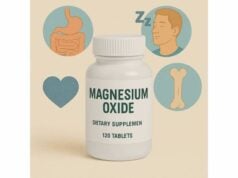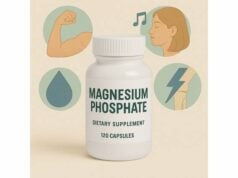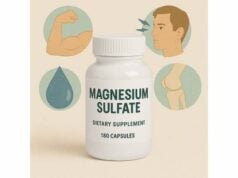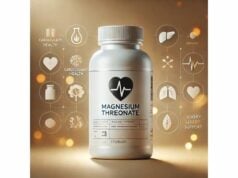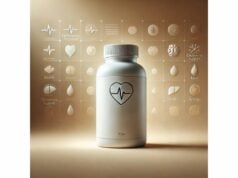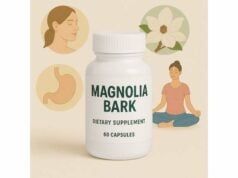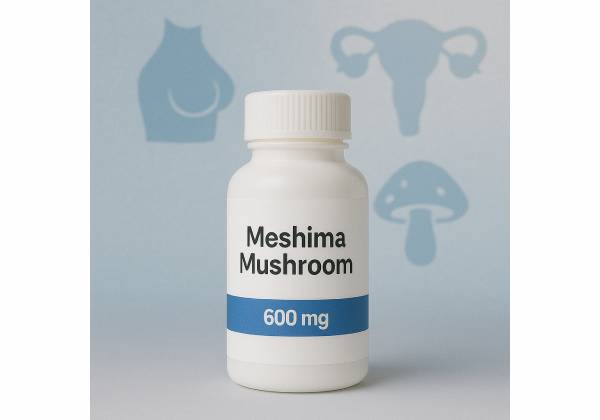
Meshima, the Japanese name for the medicinal mushroom Phellinus linteus (also called sanghuang in Korea and black hoof mushroom in English), has been used for centuries as a tonic for resilience. Today it appears in capsules, powders, and liquid extracts sold for immune support, healthy inflammation responses, and general vitality. The interest is not just historical. Meshima’s cell-wall polysaccharides (notably 1,3/1,6-β-glucans) and phenolic compounds (such as hispolon and related molecules) have shown immunomodulatory, antioxidant, and cytoprotective activity in preclinical research. Early human studies report increases in natural killer (NK) cell activity with daily use, and observational work hints at supportive roles alongside standard care in oncology settings. Still, this is not a cure-all. Effects depend heavily on the extract type and dose, and rigorous trials for specific conditions remain limited. If you’re considering Meshima, it’s wise to choose a standardized product, start with conservative amounts, and treat it as one piece of a broader routine that includes sleep, nutrition, and movement.
Quick Overview
- Daily Meshima extract can increase NK cell activity and support balanced immune responses.
- Mild digestive upset is possible; avoid combining with immunosuppressants or if you have a mushroom allergy.
- Typical standardized dose: 500–1,000 mg per day for 8–12 weeks, taken with food.
- Avoid if pregnant or breastfeeding, post-transplant on immunosuppressants, or on anticoagulants unless cleared by your clinician.
Table of Contents
- What is Meshima mushroom?
- Does Meshima actually help immunity?
- How to choose and use Meshima daily
- How much Meshima to take and for how long
- Who should avoid Meshima and potential side effects
- What the research says so far
What is Meshima mushroom?
Meshima is the common name for Phellinus linteus, a slow-growing fungus that forms dense, hoof-like fruiting bodies on hardwoods (traditionally mulberry). In East Asian traditions, Meshima preparations were simmered or steeped to create dark teas used for vigor, recovery, and longevity. Modern supplements mostly use hot-water or dual (water–ethanol) extracts from fruiting body, mycelium, or a combination. These choices matter, because different parts and extraction methods pull different sets of compounds.
The best-studied constituents include:
- β-glucans (1,3/1,6 linkages): Structural polysaccharides in the cell wall that interact with immune pattern-recognition receptors (e.g., dectin-1) on macrophages, neutrophils, and dendritic cells. This interaction primes innate defenses and can enhance antigen presentation to T cells.
- Phenolics (e.g., hispolon, inotilone): Small molecules with antioxidant and signaling effects. Preclinical work suggests roles in tempering NF-κB-driven inflammatory cascades and modulating cell survival pathways.
- Other polysaccharides and proteins: Heteropolysaccharides and fungal immunomodulatory proteins that may contribute to immune tone and redox balance.
Because these compounds operate as biological response modifiers, Meshima tends not to “stimulate” immunity indiscriminately. Instead, it nudges immune detection and communication pathways, which can look like better readiness during challenges and less over-reaction afterward. That’s why many people frame Meshima as support for balance rather than a blunt booster.
You will see several labeling approaches in the market:
- “Polysaccharides X%” — broad measure; not all polysaccharides are β-glucans.
- “β-glucans X%” — more specific; ideally measured by an independent assay rather than total carbohydrate.
- “Fruiting body” vs “mycelium” — fruiting body often has higher β-glucan content, whereas mycelium can be richer in certain phenolics; both can be useful when extracted properly.
- “Hot water” vs “dual extract” — hot water favors β-glucans; adding ethanol brings out phenolics and triterpenoid-like compounds.
For practical use, look for transparent labels that state the type of material (fruiting body/mycelium), the extraction method, and validated β-glucan content. Third-party testing for identity and contaminants (heavy metals, pesticides, microbes) is a plus. Since Meshima is a natural product, chemistry varies with species, substrate, and processing, so standardization is what brings consistency from bottle to bottle.
Finally, a note on names: scientific literature may also refer to Tropicoporus linteus, a reclassified synonym used in some databases. In supplement catalogs you may see “sanghuang,” “meshima kobu,” or “black hoof mushroom”—all pointing back to P. linteus.
Does Meshima actually help immunity?
Short answer: there is credible early human evidence for immune-function benefits, especially increases in NK cell activity, with supportive preclinical data for anti-inflammatory and cytoprotective effects. Long answer: outcomes depend on your baseline status, the extract, and what you’re measuring.
What human studies show
Randomized, double-blind, placebo-controlled research has tested standardized Meshima extract (typically 1,000 mg/day split morning and evening) in generally healthy adults over 8 weeks. The most consistent finding is an increase in NK cell cytotoxic activity compared with placebo. NK cells are part of the innate immune system and act as first responders against virally infected or abnormal cells. Improvements here do not guarantee fewer infections, but they indicate a more ready innate response. Safety labs in these trials have been unremarkable, with similar rates of mild adverse events in Meshima and placebo groups.
Beyond immune readiness, observational data in specific clinical contexts are emerging. For example, perioperative use of Meshima alongside standard chemotherapy after surgical resection of pancreatic cancer has been associated with longer overall survival in a large retrospective cohort, especially in patients who did not receive FOLFIRINOX. This does not prove causality, and it does not replace guideline-directed therapy; it suggests a potential adjunct role worth studying prospectively.
How Meshima might work
- Pattern recognition and trained innate responses: β-glucans bind dectin-1 and related receptors, triggering signaling that can enhance phagocytosis and the production of antimicrobial peptides. Over repeated exposures, innate cells may exhibit a “trained” phenotype—more efficient responses to subsequent challenges.
- Cytokine choreography: Balanced shifts in cytokines (e.g., IL-12, IFN-γ) can steer T-helper cell differentiation toward more effective pathogen control without excessive inflammation.
- Redox and inflammatory signaling: Phenolics and polysaccharides have shown the ability to temper NF-κB and MAPK pathways in models, supporting healthy inflammation resolution after a challenge.
- Tumor microenvironment effects (preclinical): Anti-angiogenic and anti-proliferative signals have been observed in cancer cell lines and animal models, but translating this to people requires careful trials.
What to expect day to day
People who take Meshima consistently for several weeks often report fewer “wobbly” days during heavy workloads, steadier energy in the afternoon, and easier recovery from minor stressors. These are subtle, cumulative effects. You’re unlikely to feel an immediate jolt on day one; think in terms of 8–12 weeks to judge value. If your sleep and diet are off, Meshima cannot compensate for those core deficits—though it may still help you feel more robust as you fix them.
Limits and open questions
The biggest limitations are heterogeneity of extracts and short trial durations. Not all products match those used in studies, and most outcomes focus on intermediate markers (like NK activity) rather than clinical endpoints (infection rates, sick-days, quality-of-life scores). Larger, longer-term trials across diverse populations—older adults, those with frequent infections, or people under metabolic stress—are needed to outline who benefits most and at what dose.
Bottom line: Meshima looks promising as immune resilience support with a reassuring near-term safety profile, best used alongside sleep, nutrition, and movement—not in place of them.
How to choose and use Meshima daily
1) Pick a product that tells you what’s inside.
Look for labels that clearly state: (a) fruiting body, mycelium, or both; (b) extraction method (hot water or dual); (c) verified β-glucan percentage (not just “polysaccharides”). Independent testing is ideal. If you see only “polysaccharides 30%,” remember that can include non-β-glucan carbohydrates and may not reflect immune-active content.
2) Decide between capsule, powder, and liquid.
- Capsules/tablets: The easiest way to reach consistent daily doses (e.g., 250–500 mg per capsule).
- Powders: Flexible and economical; mix into smoothies or broths. Taste is earthy and slightly bitter.
- Liquids/tinctures: Useful if you dislike pills; check the extract ratio (for example, 10:1) and total β-glucans per serving.
3) Pair timing with meals.
Take Meshima with food to reduce the chance of digestive upset. Morning or midday works well for most. If you take multiple immune-active supplements, stagger them to identify which one moves the needle for you.
4) Start low, then step up.
A practical on-ramp looks like this:
- Week 1: 500 mg once daily with breakfast.
- Week 2: If well tolerated and you want stronger support, increase to 500 mg twice daily (1,000 mg total).
- Weeks 3–8: Hold steady; judge benefits at the 8-week mark. Many trial protocols stop here to assess results and labs.
Keep a simple log (energy 1–10, sleep quality 1–10, how often you felt “run down,” and any side effects).
5) Combine with the basics you control.
Meshima integrates best into a routine that already includes:
- Sleep: 7–9 hours with a stable wake time.
- Protein and fiber: 20–40 g protein per meal and 25–35 g fiber per day support immune cell turnover and gut-immune crosstalk.
- Movement: 150+ minutes/week of moderate exercise plus two strength sessions; both enhance immune competence.
- Stress hygiene: Brief daily breathwork, sunlight exposure within an hour of waking, and reasonable caffeine limits.
6) Stack carefully.
It’s common to pair Meshima with vitamin D (1,000–2,000 IU/day) and zinc (8–11 mg/day from diet/supplement) if you’re low, but more is not better. Avoid piling on multiple high-dose mushroom blends unless labels are transparent, because combined β-glucan loads can rise quickly without adding benefit. If you already use reishi, turkey tail, or shiitake, consider rotating rather than stacking, or use a measured multi-mushroom formula with declared β-glucan content.
7) Build in review points.
At 8 weeks, ask: Did you get sick less often? Recover faster? Feel steadier? If “no,” consider stopping or switching to a different extract type. If “yes,” you can continue for another 4–8 weeks, then take a 1–2 week break and see whether the benefits persist without it.
8) Storage and handling.
Keep Meshima in a cool, dry place. Heat and humidity can degrade polysaccharides and oxidize phenolics. Tightly close lids and avoid bathroom storage.
Used this way—deliberately and alongside good habits—Meshima becomes a quiet background helper rather than a spotlight supplement.
How much Meshima to take and for how long
Evidence-aligned daily range:
- 500–1,000 mg/day of a standardized extract, taken with meals, for 8 weeks is the most common pattern in human trials assessing immune endpoints such as NK cell activity.
- Some products suggest up to 1,500 mg/day; staying near 1,000 mg/day is a reasonable ceiling for most healthy adults unless your clinician advises otherwise.
Translating labels into active compounds
Because labels vary, consider both the extract amount and the β-glucan content:
- If a capsule is 500 mg with 30% β-glucans, that’s 150 mg β-glucans per capsule. Two capsules daily provide 300 mg β-glucans, which sits in the middle of commonly used daily intakes for immune support from mushrooms.
- For dual extracts listing phenolics, there is no universal target, but products that provide a β-glucan anchor plus assayed phenolic content offer better predictability.
Situational dosing
- General immune resilience (work stress, travel): 500 mg every morning for 1–2 weeks before and during the demanding period.
- Seasonal support windows: 500 mg twice daily for 8 weeks, then reassess.
- Maintenance: Many people settle on 500 mg/day after an 8-week trial if they notice steadier energy or fewer “off” days.
Population-specific notes
- Older adults (65+): Start at 250–500 mg/day to assess tolerance; consider 500 mg twice daily if well tolerated after two weeks.
- Athletes and heavy trainers: Begin with 500 mg/day during loading phases; if recovery is a goal, you can use 500 mg twice daily and track soreness, sleep, and training quality.
- Metabolic considerations: If you’re on glucose-lowering medication, monitor readings when you start Meshima. While clinical hypoglycemia is uncommon, better insulin sensitivity and appetite changes can modify your usual pattern.
Duration and cycling
- Trial period: 8 weeks is a sensible window to observe changes in energy, resilience, and frequency of minor illnesses.
- Longer use: If helpful and well tolerated, extend to 12–16 weeks, then pause 1–2 weeks. Cycles help you confirm ongoing value and may sustain sensitivity.
- When to stop early: Persistent GI upset, rash, headaches, unusual bruising, or any sign of interaction with current medications.
What not to do
- Do not double or triple the dose chasing faster results. Meshima’s effects build gradually, and higher doses mostly raise the risk of side effects without adding benefits.
- Do not assume “more polysaccharides” equals “more β-glucans.” Seek products that quantify β-glucans specifically.
- Do not rely on Meshima to compensate for inadequate sleep or poor nutrition—the basics still deliver most of your immune advantage.
Used with these guardrails, 500–1,000 mg/day for 8–12 weeks covers the vast majority of responsible use cases while leaving room for personalization.
Who should avoid Meshima and potential side effects
Meshima has shown good short-term tolerability in adults, but thoughtful screening is essential because its core actions—β-glucan–mediated immune modulation and phenolic-driven inflammation control—can be unwanted in certain situations.
Avoid or use only with medical guidance if:
- You are post-transplant or on immunosuppressive drugs. Meshima’s immunomodulatory effects can counteract intended immunosuppression.
- You are pregnant or breastfeeding. Human safety data are insufficient; avoid.
- You have a known mushroom allergy. Cross-reactivity is possible; avoid.
- You are on anticoagulants or antiplatelet drugs. In vitro and animal data point to possible antiplatelet activity in related fungal extracts, and some medicinal mushrooms can theoretically influence clotting. If you use warfarin, direct oral anticoagulants, or daily antiplatelets, involve your clinician and monitor for bruising or bleeding.
- You have an autoimmune condition under active flares. Meshima may be helpful for some, but changes in immune tone should be supervised by a specialist.
Common, usually mild side effects
- Digestive: Bloating, softer stools, mild nausea—often improve when taken with meals or after dose reduction.
- Neurological: Occasional headache or light fatigue during the first week; tends to resolve with steady use.
- Skin: Rare mild rashes; discontinue and seek care if hives, swelling, or breathing changes occur.
Interaction considerations
- Multiple immune-active supplements: Stacking high-dose β-glucans from several mushrooms can raise the chance of GI symptoms without clear added benefit.
- Antidiabetic therapy: Some users notice small improvements in glucose patterns; if you use medication that can cause hypoglycemia, check levels more frequently when starting.
- Chemotherapy or radiation: Do not add Meshima without the knowledge of your oncology team. While observational data suggest possible adjunct benefits in certain settings, timing, product choice, and dose should be individualized.
Quality and contamination risk
Choose brands that provide third-party certificates confirming identity and testing for heavy metals (lead, arsenic, cadmium, mercury), pesticides, and microbial contaminants. Be cautious with products that claim extreme effects (“miracle cure,” “overnight cancer fighter”) or that rely on total polysaccharide numbers without specifying β-glucans.
When to stop and seek care
Stop immediately and seek medical advice if you experience persistent or severe GI pain, jaundice, unusual bleeding, shortness of breath, chest pain, or signs of an allergic reaction. If you are in active cancer treatment, report any supplement changes to your care team promptly.
With sensible screening and attention to dosing, most healthy adults tolerate Meshima well—and the main risks come from interactions or poor-quality products, not from typical doses themselves.
What the research says so far
The modern Meshima evidence base spans preclinical mechanisms, small randomized trials, and observational clinical cohorts. Taken together, it paints a picture of a biological response modifier that improves markers of immune readiness and may play a supportive role alongside standard care in specific contexts.
Human data
Randomized, double-blind, placebo-controlled work in healthy adults has used 1,000 mg/day of standardized P. linteus extract for 8 weeks and reported significant increases in NK cell activity compared with placebo, with good laboratory safety (liver and kidney panels stable) and few adverse events. While these are intermediary outcomes, they align with Meshima’s mechanistic rationale and with broader β-glucan literature demonstrating improved innate responsiveness.
In oncology, retrospective cohort analysis of patients after surgical resection for pancreatic cancer found that those who took Meshima during adjuvant therapy had longer overall survival than matched controls, particularly when FOLFIRINOX was not used. This is hypothesis-generating rather than definitive—confounding and selection bias remain concerns—but it underscores the need for prospective trials to clarify the adjunct role, timing, and dose.
Mechanisms that make sense
- β-glucan–dectin-1 axis: Engagement of dectin-1 on innate immune cells leads to Syk-dependent signaling, NF-κB modulation, and enhanced phagocytosis. Over time, this can manifest as improved NK cell cytotoxicity and coordinated cytokine responses (e.g., shifts in IL-12/IFN-γ).
- Anti-inflammatory braking: Meshima phenolics have downregulated pro-inflammatory signals (NF-κB, MAPKs) and matrix metalloproteinases in models, supporting tissue protection and faster return to baseline after stressors.
- Tumor microenvironment effects: In vitro and animal models show anti-angiogenic signals and inhibited proliferation in several cancer lines. Whether and how these translate in people depends on bioavailability, dosing, and context.
What we still need
- Larger trials with clinical endpoints: Illness days, infection rates, quality-of-life indices, and functional capacity under stress—all over 3–6 months—would help quantify real-world value.
- Head-to-head extract comparisons: Fruiting body vs mycelium, hot-water vs dual extract, and explicit β-glucan targets should be compared under the same protocol.
- Population-specific research: Older adults, shift workers, athletes in heavy training blocks, and people with frequent respiratory infections are practical groups for targeted trials.
- Oncology prospective studies: Given intriguing observational signals, randomized adjunct studies are warranted to evaluate survival, adverse events, and interactions with specific regimens.
Practical interpretation
For now, the best-supported use is short-term (8–12 weeks) immune resilience support in generally healthy adults at 500–1,000 mg/day of standardized extract, taken with food. Expect subtle, cumulative improvements rather than dramatic changes. As with any immune-active supplement, context and quality determine outcomes: standardized β-glucan content, transparent sourcing, and integration with foundational health habits matter as much as the capsule itself.
References
- Effects of Phellinus linteus extract on immunity improvement: A CONSORT-randomized, double-blinded, placebo-controlled trial 2022 (RCT)
- Immunomodulatory and anti-inflammatory effects of Phellinus linteus mycelium 2021
- Immunomodulatory Effects of Edible and Medicinal Mushrooms and Their Bioactive Immunoregulatory Products 2020 (Systematic Review)
- Beta-Glucans from Fungi: Biological and Health-Promoting Potential: Myths versus Reality 2021 (Review)
- Perioperative Clinical Usage of Phellinus Linteus as a Nutraceutical for Non-FOLFIRINOX-Based Postoperative Adjuvant Chemotherapy for Resected Pancreatic Cancer: A Retrospective Cohort Study 2025 (Observational Study)
Disclaimer
This guide is educational and is not a substitute for personalized medical advice, diagnosis, or treatment. Always speak with a qualified healthcare professional before starting, stopping, or combining any supplement—especially if you take prescription medications, have an immune disorder, are pregnant or breastfeeding, or are undergoing cancer therapy. If you experience allergic symptoms, unusual bruising, or persistent digestive issues after starting Meshima, stop use and seek medical care.
If this article was useful, please consider sharing it on Facebook, X (formerly Twitter), or your preferred platform, and follow us for future research-based wellness guides. Your support helps us continue producing careful, people-first content.

